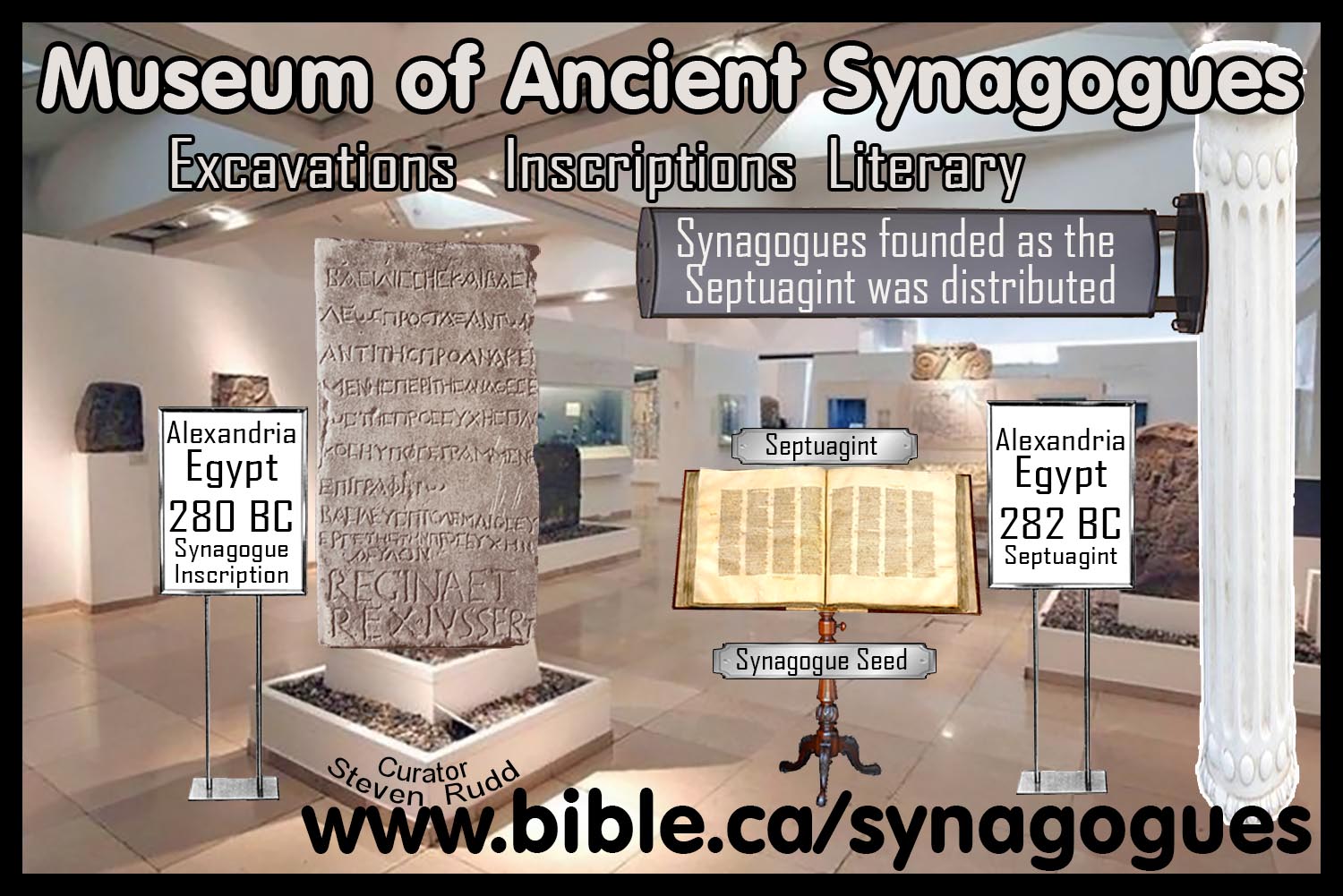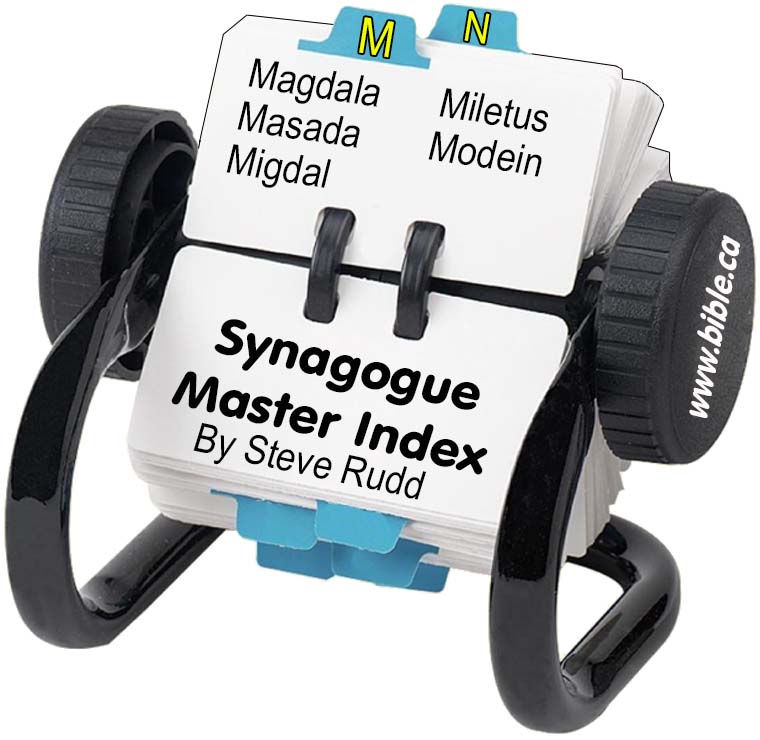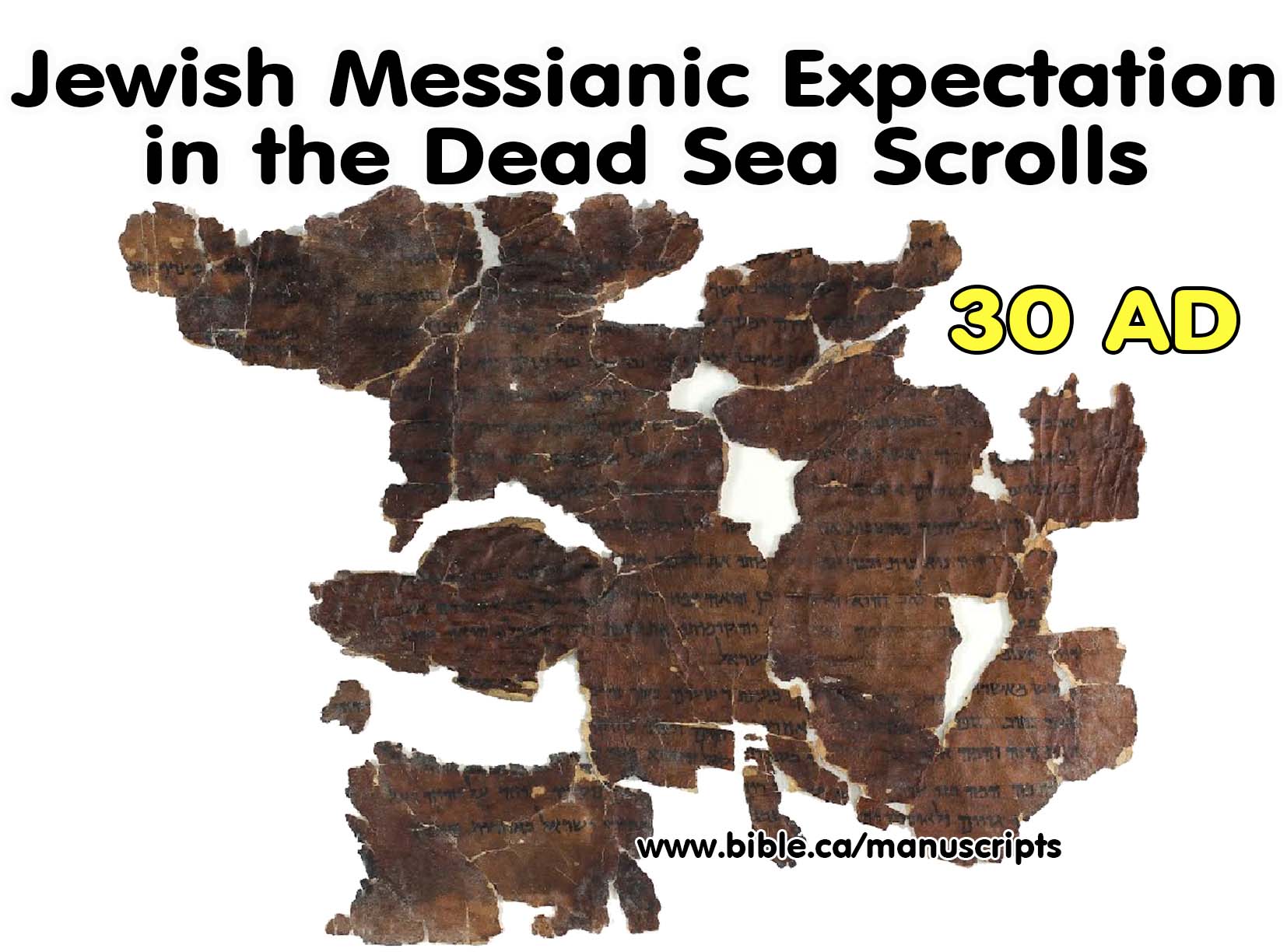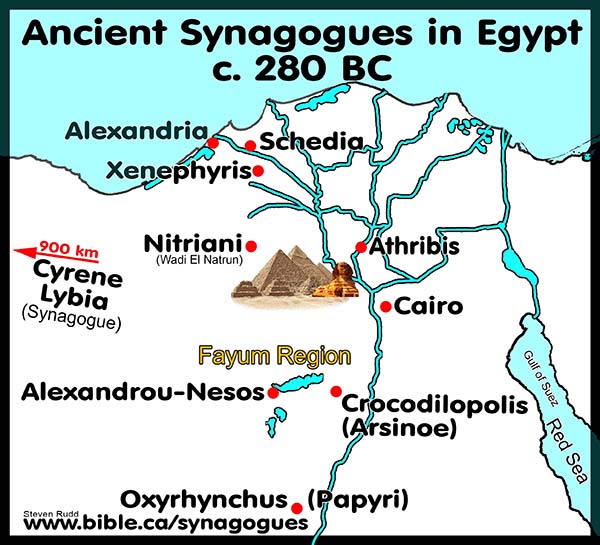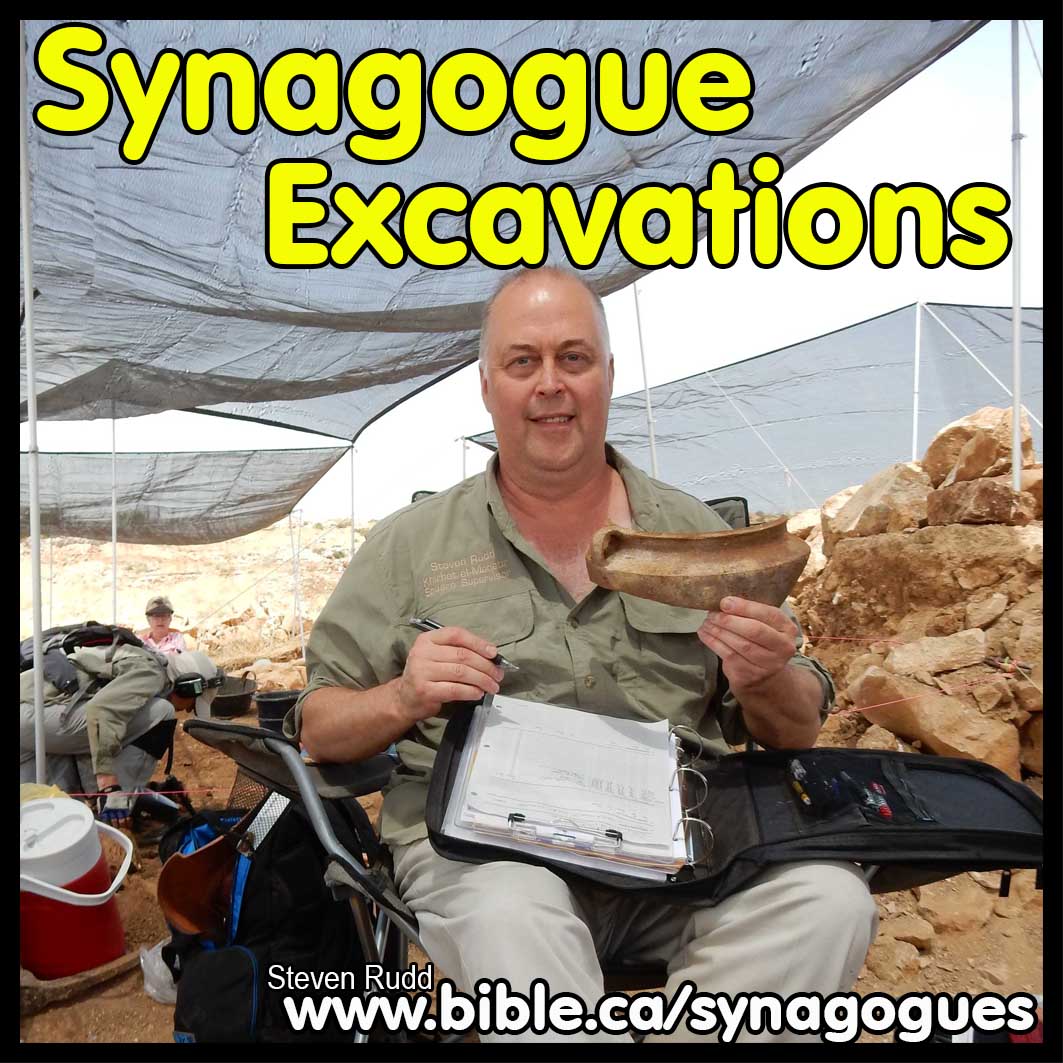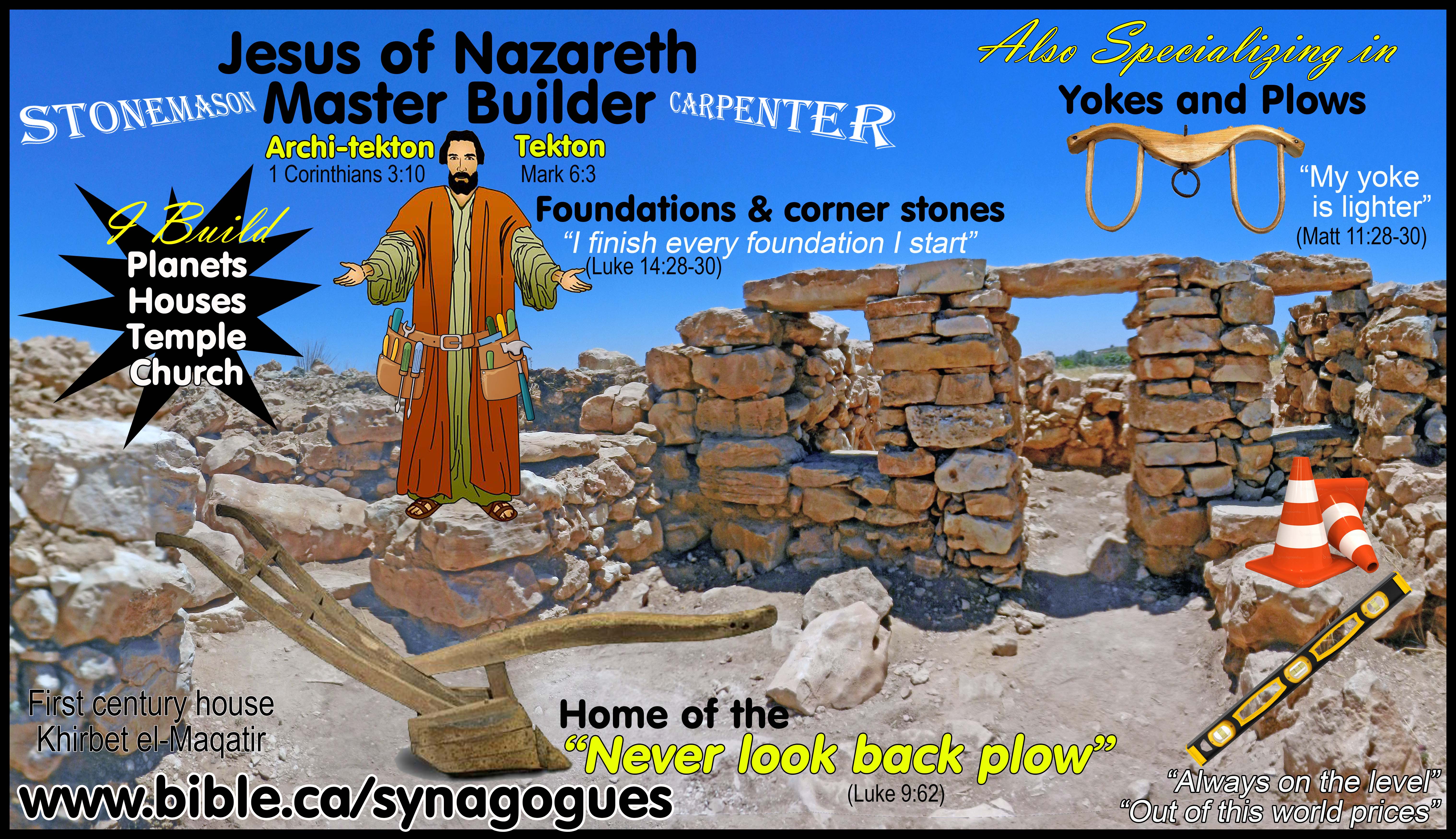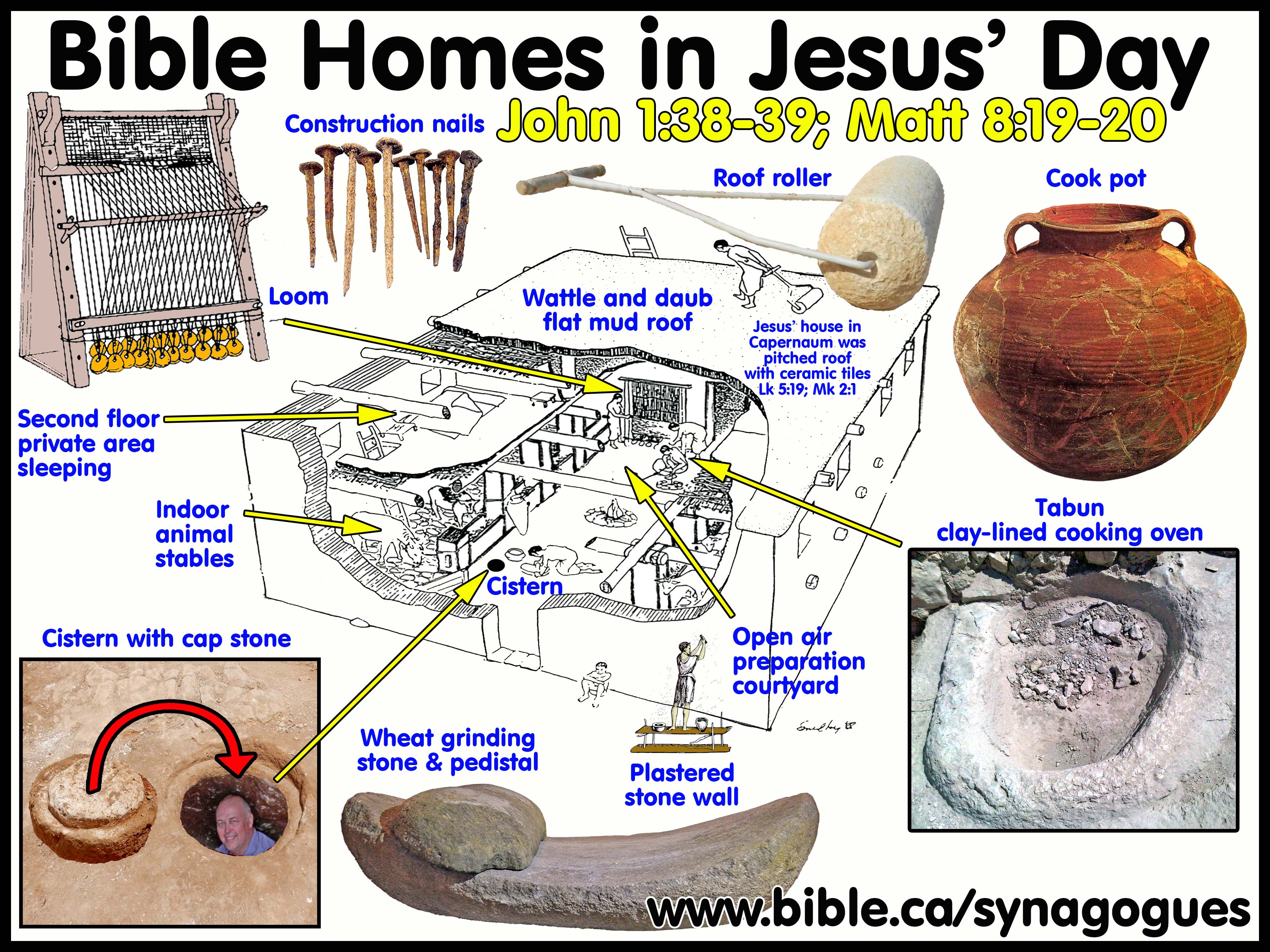The church: God’s eternal purpose
The Transition from Temple to Synagogue to Church
God’s Eternal plan: 605BC-33AD
“The manifold wisdom of God is now made known through the church to the rulers
and the authorities in the heavenly places. This was in accordance with the eternal purpose
which He carried out in Christ Jesus” (Eph 3:8-12)
"To God be the glory in the church and in Christ Jesus to all generations forever and ever. Amen." (Ephesians 3:21)
"But when the fullness of the time came, God sent forth His Son, born of a woman,
born under the Law, so that He might redeem those who were under the Law,
that we might receive the adoption as sons." (Gal 4:4-5)
Archeology without a Bible foundation is just a pile of sand. Without faith it is impossible to please God and without faith in the historical accuracy of the New Testament it is impossible to discover the origin and purpose of Synagogue worship.
Introduction:
A. God’s eternal purpose in the Christian church:
“The manifold wisdom of God is now made known through the church to the rulers and the authorities in the heavenly places. This was in accordance with the eternal purpose which He carried out in Christ Jesus” (Eph 3:8-12)
1. The rise of Babylon, Persia, Greece and Rome were all part of God’s eternal purpose in the Christian church.
2. The mass conversion of the Jewish population to speak Greek was a providential part of God’s eternal purpose in the Christian church.
3. The Library of Alexandria, founded by Ptolemy I (323-282 BC) was a providential part of God’s eternal purpose in the Christian church.
4. The Greek Septuagint of the Torah by 70 Jewish bilingual scholars Jerusalem from in 280 BC, under the oversight of Ptolemy II in Egypt, was part of God’s eternal purpose in the Christian church to provide a “certified” translation of the entire Tanakh in Greek.
5. The Egyptian-origin Jewish Synagogues (proseuche- “place of prayer”) in 280 BC a part of God’s master plan for the Christian church in providing a transition from Temple to Church worship.
6. At the time of the church’s birth on 3 April 33 AD, Christians worshipped Christ in the Jerusalem Temple and in the hundreds of Jerusalem synagogues:
a. "Day by day continuing with one mind in the temple, and breaking bread from house to house, they were taking their meals together with gladness and sincerity of heart," (Acts 2:46)
b. Notice the reading and teaching was in the temple, but communion was done privately house to house.
7. Apostle Paul who wrote have the New Testament was a Pharisees, the very sect that controlled Synagogues (Sadducees/High priest controlled the Jerusalem temple). In this way apostle Paul’s own significant experience in a synagogue environment paved the way for his conversion to Christianity and establishing new local churches all over the world.
a. In 36 AD Apostle Paul (Saul) triggered the first great Christian Diaspora of with the stoning of Stephen: "Saul was in hearty agreement with putting him to death. And on that day a great persecution began against the church in Jerusalem, and they were all scattered throughout the regions of Judea and Samaria, except the apostles. Some devout men buried Stephen, and made loud lamentation over him. But Saul began ravaging the church, entering house after house, and dragging off men and women, he would put them in prison." (Acts 8:1-3)
b. During this early period, Christians began using Synagogues on the first day of the week, adopting the same basic pattern of synagogue worship they were familiar as Jews before converting to Jesus Christ as their risen savior from their sins.
c. After Paul’s conversion during his three missionary journeys, Paul began worshipping with the Jews in the synagogues until they expelled him.
B. Jesus the Master Builder of the Temple/church: Architect (Stonemason and Carpenter)
1. Master builder of the Universe as “creator”:
a. “You, Lord [Jesus], in the beginning laid the foundation of the earth, And the heavens are the works of Your hands" (Hebrews 1:8–11)
2. Master builder of homes as a secular physical trade for income as a man on earth:
a. “Is not this the carpenter [Greek: tekton]" (Mark 6:3)
3. Master builder of the spiritual temple, which is the Church of Christ!
a. “I will destroy this temple made with hands, and in three days I will build another made without hands.” (Mark 14:58)
b. Jesus is “the founder [archegos] and completer [teleiotes] of our faith.” Heb 12:2
c. "Like a wise master builder [archi-tekton] I laid a foundation, and another is building on it. But each man must be careful how he builds on it. For no man can lay a foundation other than the one which is laid, which is Jesus Christ." (1 Corinthians 3:10–11)
d. "you are of God’s household, having been built on the foundation of the apostles and prophets, Christ Jesus Himself being the corner stone, in whom the whole building, being fitted together, is growing into a holy temple in the Lord, in whom you also are being built together into a dwelling of God in the Spirit." (Ephesians 2:19-22)
C. In 2BC Jesus was born “when the fullness of the time came, God sent forth His Son” (Gal 4:4) and the explosion of Christianity that began in Judea, spread throughout the world and synagogue worship was the bridge between Mosaic Judaism and Christianity
1. The birth of Christ signalled that God was ready to make the final transition from Synagogue worship to Christianity
a. There was a modern Roman roadway system for easy travel of evangelists.
b. The Hebrew scriptures translated into Greek in all the Synagogues around the world.
c. This laid the foundation for the first century church to quickly spread throughout the world.
2. There was an expectation of the Messiah in the first century:
a. "Now while the people were in a state of expectation and all were wondering in their hearts about John, as to whether he was the Christ" (Luke 3:15)
b. "Now when John, while imprisoned, heard of the works of Christ, he sent word by his disciples and said to Him, “Are You the Expected One, or shall we look for someone else?”" (Matthew 11:2-3)
3. Two Dead Sea Scrolls document how first century Jews were familiar with the Messianic prophecy of Deut 18:18
a. See full outline on First century Jewish Messianic Expectation.
b. "‘I will raise up a prophet from among their countrymen like you, and I will put My words in his mouth, and he shall speak to them all that I command him. ‘It shall come about that whoever will not listen to My words which he shall speak in My name, I Myself will require it of him." (Deuteronomy 18:18–19)
c. Paul followed the Rabbinical synagogue preaching style with Jews by quoting Deut 18:18 "God spoke by the mouth of His holy prophets from ancient time. “Moses said, ‘The Lord God will raise up for you a prophet like me from your brethren; to Him you shall give heed to everything He says to you. ‘And it will be that every soul that does not heed that prophet shall be utterly destroyed from among the people.’ “And likewise, all the prophets who have spoken, from Samuel and his successors onward, also announced these days. “It is you who are the sons of the prophets and of the covenant which God made with your fathers, saying to Abraham, ‘And in your seed all the families of the earth shall be blessed.’ “For you first, God raised up His Servant and sent Him to bless you by turning every one of you from your wicked ways.”" (Acts 3:21-26)
d. Moses clearly said that when the Messiah comes, that he would relinquish his authority to the Messiah and commanded all his followers to obey Christ in all things.
e.
Ancient papyrus documents found at Qum’ran
quote Deut 18:18 in expectation of the Messiah.
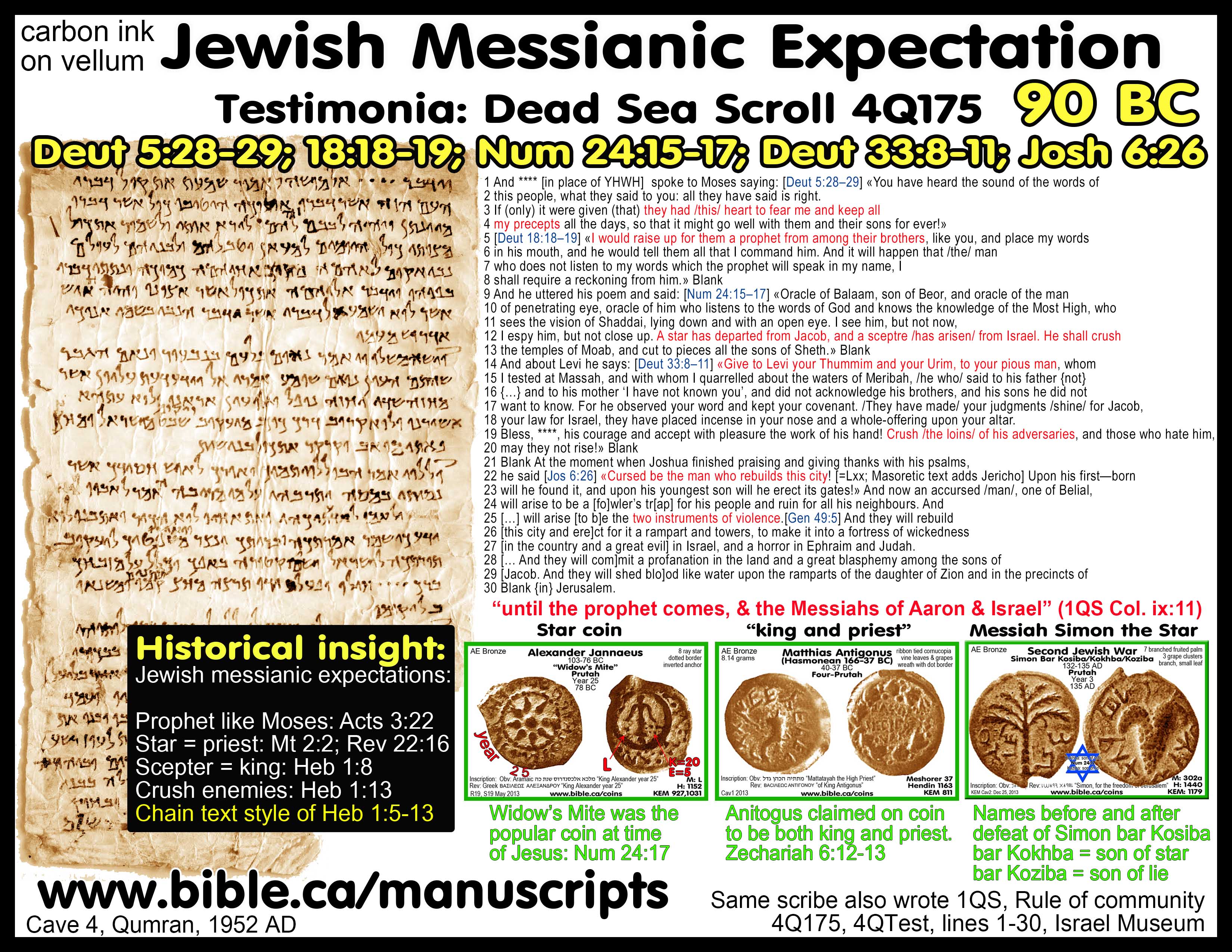
4. Thousands of autonomous synagogues that focused on studying the word of God which Apostle Paul took advantage of as “white for harvest”:
a. Thousands of Synagogues all over the world had been in full mature operation for over 100 years.
b. The miracles of Paul attracted the Gentiles but they did not accept the Tanakh as an inspired message from God.
c. The Jews in each synagogue were a “fertile plowed field” who could be persuaded from the Tanakh that Jesus was the Messsiah:
i. "And according to Paul’s custom, he went to them, and for three Sabbaths reasoned with them from the Scriptures, explaining and giving evidence that the Christ had to suffer and rise again from the dead, and saying, “This Jesus whom I am proclaiming to you is the Christ.” And some of them were persuaded and joined Paul and Silas, along with a large number of the God-fearing Greeks and a number of the leading women." (Acts 17:2-4)
ii. Paul “went into the synagogue of the Jews [in Berea]. Now these were more noble-minded than those in Thessalonica, for they received the word with great eagerness, examining the Scriptures daily to see whether these things were so. Therefore many of them believed, along with a number of prominent Greek women and men." (Acts 17:10–12)
I. Synagogues are the direct result of God’s Divine providence: 605-380 BC
A. 605 BC: Daniels visions of five kingdoms traces the path of God’s grace from Mosaic Judaism to Christianity: Babylon, Persia, Greece, Rome, the Church.
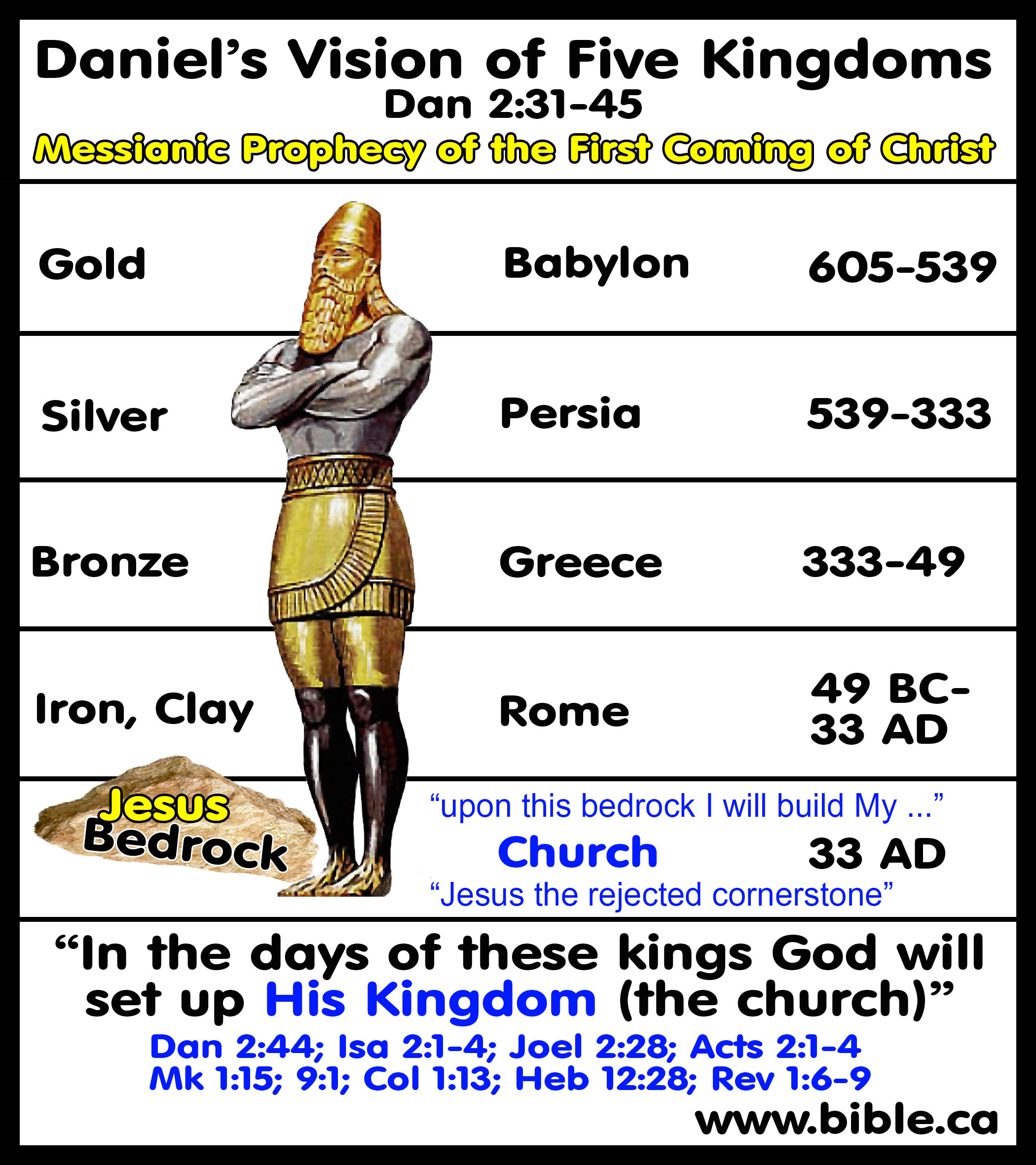
https://www.bible.ca/bible-prophecy-daniels-vision-statue-four-kingdoms-Babylon-Medo-Persia-Greece-Rome-church.jpg
1. Jesus said, “On this rock [lit: bedrock] I will build My church”.
a. That rock, is the rock in Dan 2:25, “a stone was cut out of the mountain without hands”
b. So there is direct line from the Babylonian captivity of 605 BC to the Church of Christ in 33 AD
c. Synagogues were a bridge between the two.
2. "In the days of those kings the God of heaven will set up a kingdom which will never be destroyed, and that kingdom will not be left for another people; it will crush and put an end to all these kingdoms, but it will itself endure forever. “Inasmuch as you saw that a stone (Jesus Christ) was cut out of the mountain without hands and that it crushed the iron, the bronze, the clay, the silver and the gold, the great God has made known to the king what will take place in the future; so the dream is true and its interpretation is trustworthy.”" (Daniel 2:44-45)
3. "Jesus said to them, “Did you never read in the Scriptures, ‘The stone [Lithos: wall stone] which the builders rejected, This became the chief corner stone [akrogōniaios: corner stone]; This came about from the Lord, And it is marvelous in our eyes’? “Therefore I say to you, the kingdom of God will be taken away from you and given to a people, producing the fruit of it. “And he who falls on this stone [Lithos: wall stone] will be broken to pieces; but on whomever it falls, it will scatter him like dust.” When the chief priests and the Pharisees heard His parables, they understood that He was speaking about them." (Matthew 21:42–45)
4. Jesus Christ was the bedrock stone that crushed the four kingdoms in order to establish the 5th kingdom, the church of Christ, on 33 AD.
B. 605-333 BC: The Babylonian captivity was the great diaspora that scattered Jews around the world outside Judea and large populations of Jews never returned.

bible-archeology-Nebuchadnezzar-Destruction-of-Jerusalem-Siege-Israelite-Tower-5-arrowheads-4-Israeli-iron-1-Scytho-Iranian-587bc.jpg
1. In 605-356 BC, during the captivity, the entire nation replaced their Hebrew alphabet with the Aramaic alphabet for their native Hebrew spoken language. Additionally, most were force converted to the Aramaic language.
2. In 483 BC, the book of Esther documents a large population of Jews who remained in Babylonia (Persia).
3. In 410 BC the Elephantine Papyrus document a large population of Jews on the southern border of upper Egypt with Ethiopia that included a functioning temple.
C. 333 – 323 BC: Alexander the Great though his Greek kingdom, brought about several huge changes in the Jewish nation:
1. In 333 BC, the almost universal conversion to Greek language of the entire world including diaspora Jews.
2. In 323 BC, After ten short years, Alexander the Great dies and his kingdom splits into four kingdoms
a. Alexander is divinely prophesied and fulfills Daniel 8:8; 11:3-4
3. In
323-282 BC, Ptolemy I is one of the four horns prophesied by Daniel and is the
first king who founds the Egyptian Ptolemaic empire.
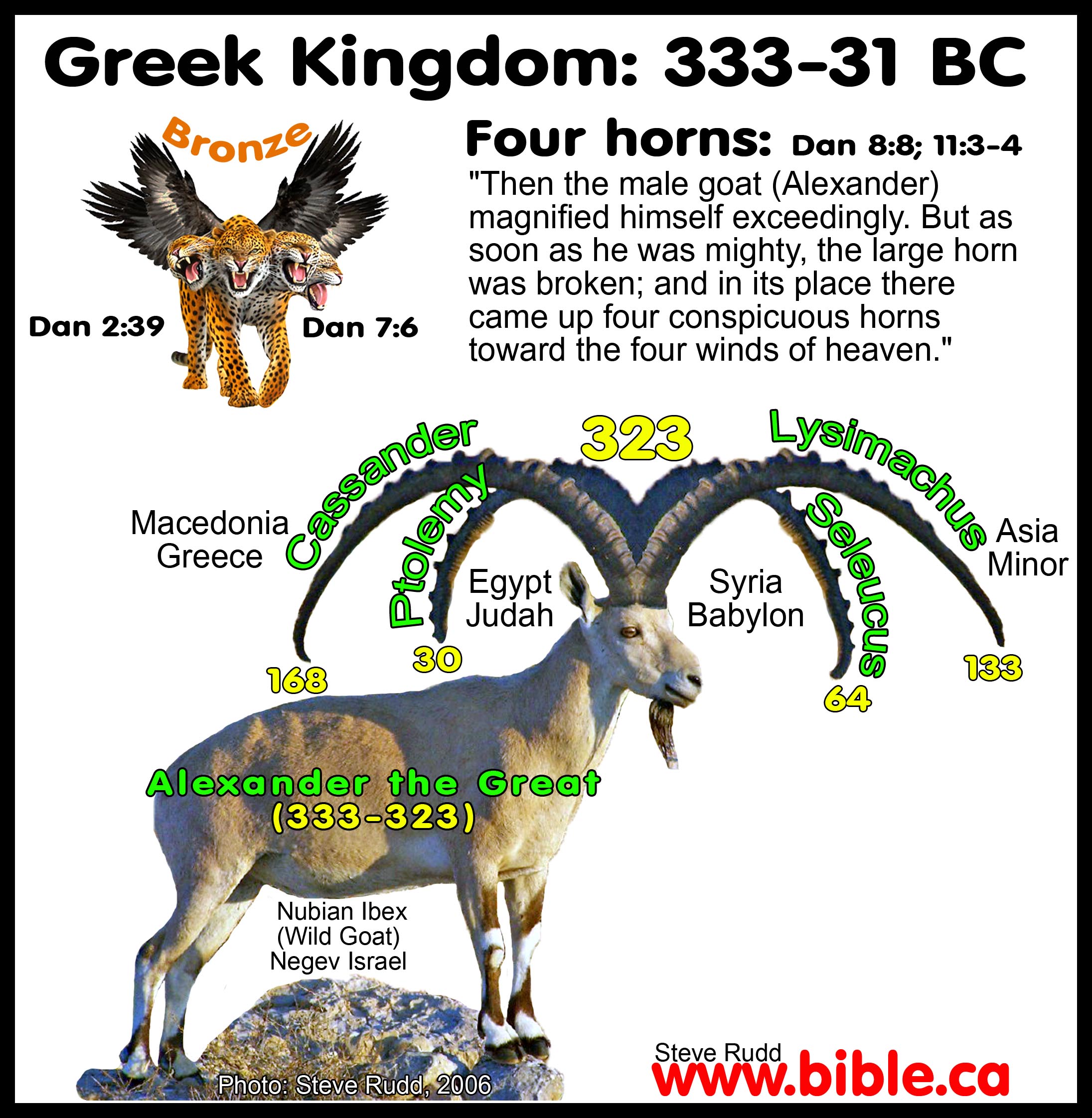
bible-archeology-greek-kingdom-Daniel-prophesy-bronze-leopard-four-horns-goat-alexander-the-great-seleucid-ptolemy-cassander-lysimachus-hasmonean-maccabean-dates-333-31bc.jpg
D. 323 -282 BC: Ptolemy I builds the library of Alexandria
1. The archeological evidence for the Library is unquestioned.
a. The library was considered one of the seven wonders of the Greek world.
b. It housed every book known on earth and Alexandria was the intellectual capital of the world.
c. When the author visited the modern day Library of Alexandria, the local MUSLIM guides tell the public that Christians burned the Library down. Sure they did and Islam is a religion of peace that respects libraries and museums!
d.
The library of Alexandria was burned in 642 AD by Caliph Omar who is
quoted as saying: "If those books are in agreement with the Quran, we have
no need of them; and if these are opposed to the Quran, destroy them."
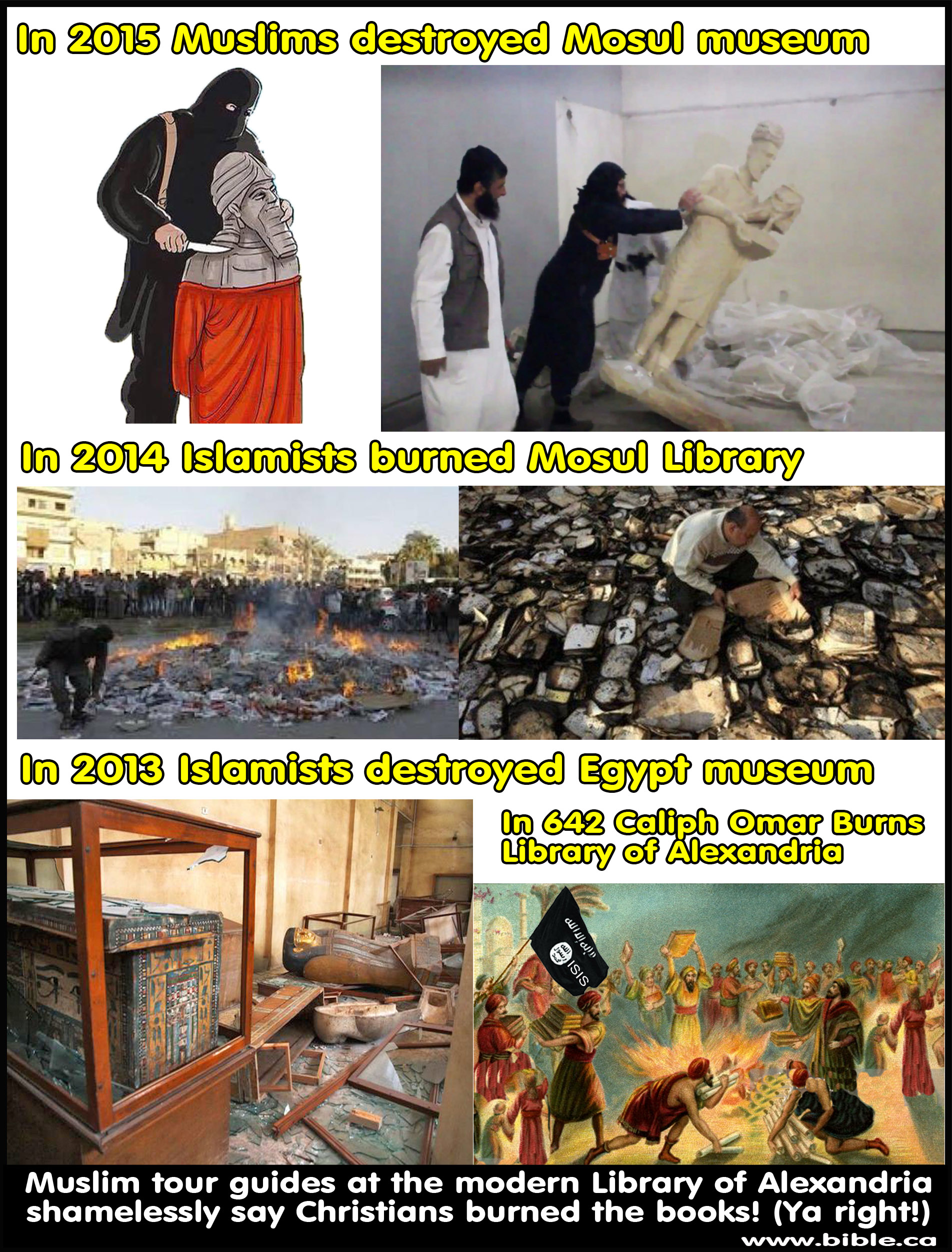
2. The author excavated the oldest Judean coin ever minted (quarter-ma or ‘ah-obol) under the authority of Ptolemy I at Kh. Maqatir in 2012 AD from sifting!
a. Judean coins "YHD" coins in the early Ptolemaic empire (Egypt): "Coins 29-30: These coins too, on one side of which is seen a youthful male head and on the other an eagle, lack the characteristics of the Persian period. On the other hand they still lack certain Ptolemaic features, in particular the head of a Ptolemaic king or queen — a dominant element on their coins. In the meanwhile, until further facts are clarified, it is better to date Coins 29-30 to the transitional period of Macedonian rule in the country." (Meshorer, p 19)
b. The coin features a young male head on one side (Obverse) and a spread winded eagle on the other (Reverse)
c.
Most important, it is the first coins with the name JEW
or JUDAH on it (YHD)
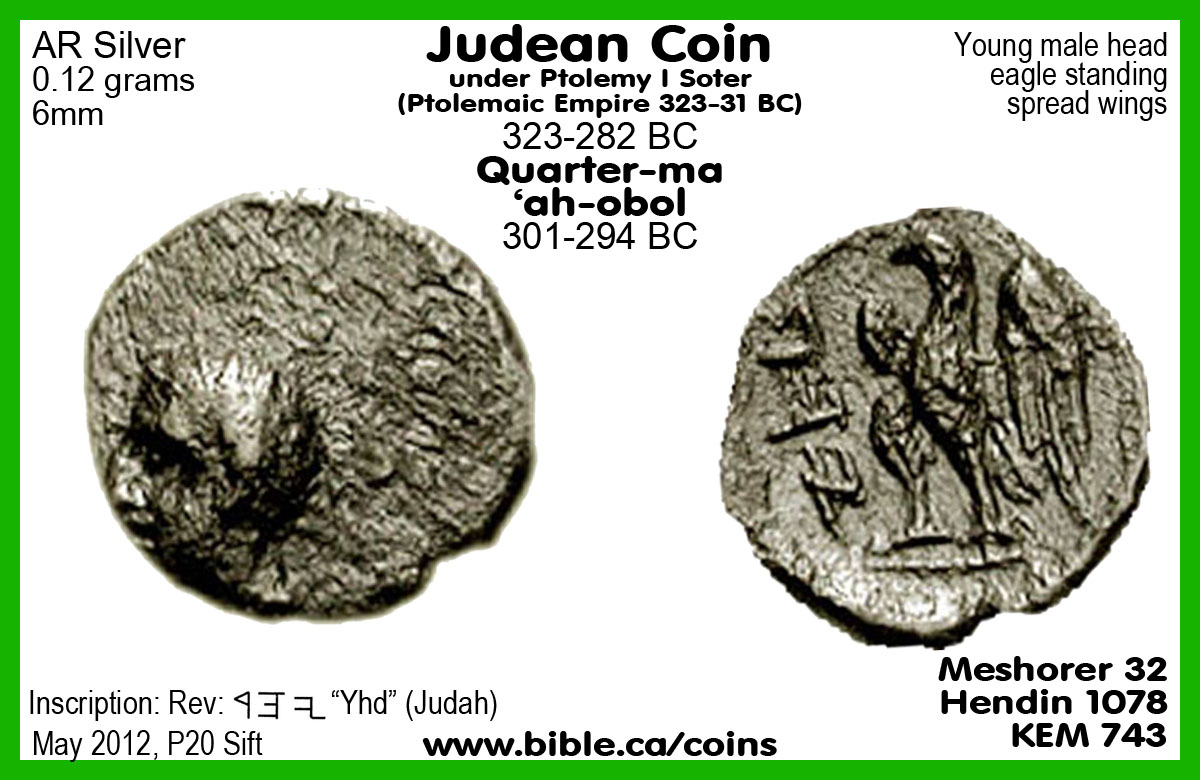
D. 282 BC: Ptolemy II commissions the Septuagint Greek translation of the Hebrew scriptures for the Library of Alexandria:
1. 70 native Judean translators from Jerusalem travelled to Egypt to create the Septuagint Greek translation, giving it universal approval for use among the Greek speaking population.
4. The author excavated this coin of Ptolemy II at Kh. Maqatir in 2011 AD. It is the only coin of its denomination ever found in the world.
a. This is the only “diobol” known to exist and is currently in the Israel Museum.
b.
In fact the team at Maqatir have actually excavated 5 coins never before
found in professional 3 dimensional archeological digs.

E. 280 BC: Synagogues are born in Alexandria, as a direct result of God’s providence: Eph 3:8-12; Gal 4:4
1. It is important to keep the larger eternal plan God has in preparing the conditions for Jesus Christ and a world wide mass conversion to Christianity and the church in the first century AD.
a. "To me, the very least of all saints, this grace was given, to preach to the Gentiles the unfathomable riches of Christ, and to bring to light what is the administration of the mystery which for ages has been hidden in God who created all things; so that the manifold wisdom of God might now be made known through the church to the rulers and the authorities in the heavenly places. This was in accordance with the eternal purpose which He carried out in Christ Jesus our Lord, in whom we have boldness and confident access through faith in Him." (Ephesians 3:8–12)
b. God’s providence provided a mass world wide conversion to the Greek language paving the way for the Greek New Testament.
c. The Library of Alexandria was God’s providential way to provide the world a “Jerusalem certified” Greek translation of the Hebrew Old Testament paving the way for the ministry of Christ and the apostles in the church.
d. Synagogues as an institution are the pararhyme for the Christian church which provide a Jewish transition between Temple worship and the Christian church.
e. Apostle Paul who wrote have the New Testament was a Pharisees, the very sect that controlled Synagogues (Sadducees/High priest controlled the Jerusalem temple). In this way apostle Paul’s own significant experience in a synagogue environment paved the way for his conversion to Christianity and establishing new local churches all over the world.
2. The origins of the synagogue can be traced back to 280 BC in Alexandria when Ptolemy II translated the Tanakh into Greek (LXX) in Alexandria Egypt to be deposited in the great Library of Alexandria.
a. In Alexandria, the Septuagint triggered the genesis of the very first synagogues anywhere in the world.
b. The rise of Synagogue worship is a direct and immediate response to the Greek Septuagint, which equipped diaspora Jews with a text of the word of God they could read in the only language they could read and write: Greek.
c. Living in Egypt far from the Jerusalem temple, and with full approval of the high priest in Jerusalem, they began to gather together for the purpose of reading the first five books of Moses and pray.
d. It was in Alexandria that the very first synagogues, known in Greek as a “proseuche” (place of prayer) were born.
e.
In 246 BC the oldest Greek synagogue inscription ever found documents a
large population of Jews in Lower Egypt near Alexandria. There are actually two
almost identical inscriptions from two different synagogue proving that
synagogues were well organized and established.

3. Archeological proof of these Alexandria and Egyptian synagogues is massive:
a. While no actual synagogue structures or buildings have been discovered at this point, there is significant proof through both inscriptions and papyrus documents that they existed.
b. It is in Alexandria Egypt, that the Jews produced a “standardized architectural synagogue typology” that quickly spread first to all diaspora Jews and second to Judea itself.
D. 166-63 BC: The Hasmonean/Maccabean rebellion to the Syrian Seleucid kingdom standardized synagogue worship with the distribution of the Septuagint to each synagogue.
1. The Seleucids were one of the four Kingdoms that arose from prophecy after the death of Alexander the Great in 323 BC which ruled Syria.
2. Antiochus IV desecrated the temple in 167 BC which triggered the rebellion of Mattathias.
3. Two references to synagogues in 1 Maccabees during the Hasmonean era: 166 BC: 1 Maccabees 2:42-46; 7:12-13 (LXX)
4. The author excavated two different coins of Antiochus IV at Kh. Maqatir in 2013 AD.
a. First row left: Maqatir. First row right: museum example of the same coin.
b.
Second row left: Maqatir. Second row right: museum example of same coin.




c. By 150 BC, we can be certain from archeological and textual information that all 39 books of the Jewish Old Testament (Tanakh) had been translated into Greek.
d. The Maccabees began minting their own Jewish coins and achieved full independence from 110 – 63 BC.
e. Around the time of Alexander Janneus (103-76 BC) a copy of the Greek Septuagint was distributed into each Synagogue in Judea and outside Judea among the diaspora Jews.
f.
Here is a real widow’s mite (Prutah of Alexander
Jannaeus) excavated by the author at Kh. Maqatir in 2013 AD and a drawing of
same coin to right.
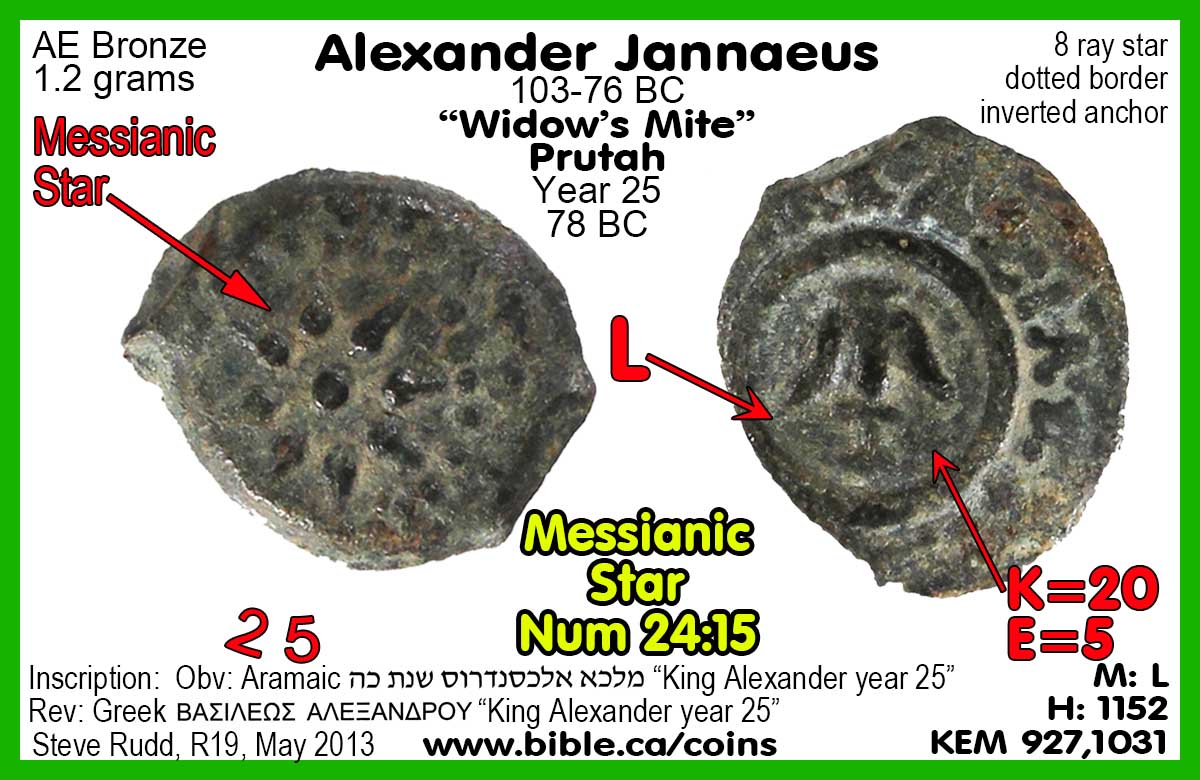

E. 31 BC: The Roman Empire: “The time is fulfilled, the kingdom of God (church) is at hand: Mk 1:15
1. As part of God’s providence to pave the way for the birth of the church, Julius Caesar issued a series of imperial decrees recorded by Josephus that protected every synagogue in the world. By protecting each and every aspect of Jewish synagogue worship it ensured a stable “Torah compliant” network of synagogues throughout the world ready to hear the Gospel of Jesus through the ministry of Apostle Paul and others:
a. DECREE: Freedom to self-determination of Jewish worship.
b. DECREE: Right of Assembly in distinct synagogue building of their own design.
c. DECREE: Right to keep operate a civic court in the synagogue.
d. DECREE: Right to keep the Sabbath and refrain from work.
e. DECREE: Right to keep kosher food laws “ancestral food”.
f. DECREE: Right to keep annual Jewish Holy days.
g. DECREE: Right to collect money.
h. DECREE: Exempt from military service.
2. The universal language: Greek
a. Greek was the universal language of the entire world including Judea.
b. “THE STUDIES OF THE LANGUAGE situation in the ancient synagogue that have been carried out within the framework of the Synagogue Project have mainly had the Greek language as their object. The most tangible result of those studies so far is the doctoral dissertation by Georg Walser, The Greek of the Ancient Synagogue” (The Ancient Synagogue from it origins to 200 CE, Birger Olsson, Text of the Bible used in the ancient synagogues, Emanuel Tov, p237, 2003 AD)
c. Hebrew was extinct throughout the entire world, except for the Sadducean temple elites who ran and controlled the Jerusalem temple.
d. Jews in Judea spoke both Aramaic and Greek but outside Israel all Jews spoke Greek.
e. Jesus was trilingual and his fluency of Temple Hebrew at the age 12 was one of the things that caused them to say, “all who heard Him were amazed at His understanding and His answers” (Lk 2:47)
f. The High Priest who was a Sadducee, (sect of Temple Elites) conducted Jerusalem Temple services in Hebrew to an audience who didn’t understand Hebrew.
g.
The Temple services were conducted in Hebrew to a Greek/Aramaic
audience, the same way Catholic priests speak Latin to an English-speaking
church. This made synagogue worship all the more appealing!!!

3. The universal place of worship: Synagogues
a. Synagogue worship was a long established institution under the control of Pharisees.
b. The Pharisees controlled the thousands of Greek speaking synagogues in Judea and outside.
c. “The significance of the Acts [6:1-5] passage is twofold. The list of Diaspora Jewish communities in Jerusalem is impressive. In contrast to Acts 2:5-11, which attests to a large and multifarious gathering "from every nation" in the Diaspora on the festival of Shavuot," our passage speaks of the institutionalized presence of Diaspora Jews in the city. (The Ancient Synagogue, Lee Levine, p56, 1999 AD)
d. “Philo of Alexandria, Egypt, he too refers to “synagogue” not as a gathering of people, but as a building—one that in fact was vandalized, and he complains about that. Philo was born we think in 20 bc; he dies we think around ad 50. What would he know about changes in Jewish life and architecture after the year 70? Yet here he is, talking about buildings, synagogues, where people would gather and pray, worship, Scriptures, socialize, and so on.” (NT307 Archaeology and the New Testament, Jesus and the Synagogue, Craig Evans, 2014 AD)
4. The universal Bible: Septuagint
a. All 39 Old Testament books of the Jewish Tanakh had been translated from Hebrew into Greek by 150 BC.
b. The Greek Septuagint was the official and accepted Tanakh (Old Testament) stored in the “Ark of the Scrolls” cabinet inside each synagogue.
c. The scrolls of the Greek Septuagint Tanakh were housed in the “Ark of the Scrolls” in synagogues to be read and studied every Sabbath.
F. 3 April 33 AD: The kingdom of prophecy (the church) is founded:
1. Jesus dies on the cross and founds his church with his resurrection.
2. It is exactly 1000 years from the founding of Solomon’s physical temple to the founding of the spiritual temple: the church (33 AD)
3. On the day of Pentecost, Peter uses the keys Jesus gave him to save the first 3000 Jews from their sins by the blood of Christ
4. How to be saved:
a. Believe Jesus rose from the dead: Mk 16:16
b. Repent of your sins: Acts 2:38
c. Confess Jesus as Lord: Acts 8:35-40
d.
Baptized by immersion for remission of your sins and be
born again: Acts 22:16; 1 Peter 3:21
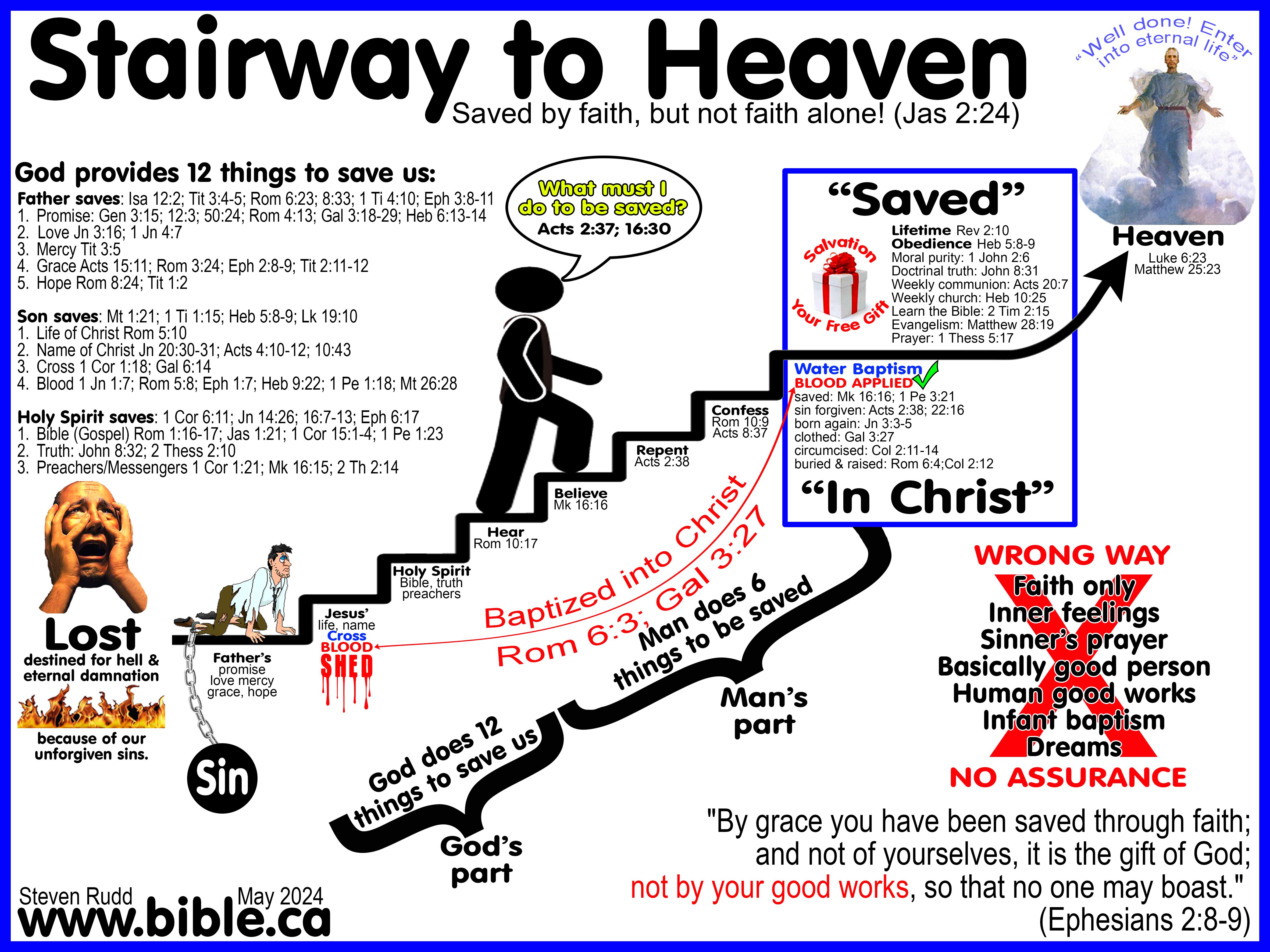
https://www.bible.ca/salvation-christian-how-to-be-saved-faith-repentance-confession-water-baptism-stairway-stairs-to-heaven-john-3-16.jpg
G. 36 AD: Apostle Paul, chosen from birth by God, is converted as part of God’s providential eternal purpose: Gal 1:15
1. “But when God, who had set me apart even from my mother’s womb and called me through His grace, was pleased to reveal His Son in me so that I might preach Him among the Gentiles, I did not immediately consult with flesh and blood, nor did I go up to Jerusalem to those who were apostles before me; but I went away to Arabia [Mt. Sinai], and returned once more to Damascus." (Galatians 1:15–17)
a. Apostle Paul was uniquely qualified to establish the church throughout the world and write half the New Testament.
2. Paul, like Jesus, was trilingual: Hebrew, Aramaic and Greek
a. Greek speaking apostle Paul was born in Tarsus, but moved to Jerusalem as a young boy.
b. Paul learned the Temple Elite Hebrew in Jerusalem: “I am a Jew, born in Tarsus of Cilicia, but brought up in this city, educated under Gamaliel, strictly according to the law of our fathers, being zealous for God just as you all are today." (Acts 22:3)
c. Just as Moses learned the wisdom of Egypt, Paul was trained by some of the highest ranking Jewish authorities of his day “Gamaliel” (Acts 5:34)
3. Paul was a Pharisee: Phil 3:5
a. Apostle Paul a Pharisee was very familiar with synagogue worship making the transition to the Christian church easy and natural.
b. "circumcised the eighth day, of the nation of Israel, of the tribe of Benjamin, a Hebrew of Hebrews; as to the Law, a Pharisee;" (Philippians 3:5)
4. Both Moses and Paul escaped death at the hands of rulers and escaped to Mt. Sinai: Gal 1:17
- Paul was saved three days after seeing Jesus on the road to Damascus when He was baptized (Acts 22:16). He had to escape the city in a basket and then fled for three years to Mt. Sinai.
a. Aretas IV (4 BC - 40 AD) was the King of Arabia when Paul was converted at Damascus in 36 AD.
- "In Damascus the ethnarch under Aretas the king was guarding the city of the Damascenes in order to seize me, and I was let down in a basket through a window in the wall, and so escaped his hands." (2 Corinthians 11:32-33)
c. "nor did I go up to Jerusalem to those who were apostles before me; but I went away to Arabia, and returned once more to Damascus." (Galatians 1:17)
5. Paul was very “Moses-like”: 25 ANTITYPES: Paul is the Antitype of Moses as Lawgiver of New Covenant: See full outline
a. Chosen from birth for special purpose
b. Outsider "Trojan horse" brought into highest level of inner circle
c. Top education the world had to offer at the time
d. Rejected earthly/fleshly position, riches and prestige for invisible Heavenly treasures by faith enduring the rather and persecution from his former life. Rejected earthly for heavenly
e. Faith took action before directed by God:
f. Murder involved in their conversions
g. Both were rejected as a deliverer by their brethren at first
h. Both were visited by God with a bright light in wilderness
i. Kings tried to kill them
j. Both escaped death through a woven basket
k. Both immediately fled to Mt. Sinai and received instruction
l. Both asked the Unknown God to identify Himself as "I AM".
m. Returned to Egypt/Jerusalem only after king to who had tried to kill him was dead.
n. Both received instructions on the law at Mt. Sinai
o. Fellow Hebrews rejected the message
p. Fellow Jews returned to slavery.
q. Both performed miracles
r. Both speech problems
s. Both saw incredible visions and revelations that affected them physically
t. Both repeatedly asked God for a request but were denied
u. Both were law givers
v. Veiled Mystery of Moses removed by Christ/Paul
w. Stone vs. Spirit
x. Became fearful during the mission and deeded reassuring
y. Moses prophecies his replacement is Christ: Acts 3:22-23
H. 70 AD: The church is fully established and God destroys the Jerusalem temple extincting Mosaic Judaism:
1. Jesus (Lk 21:20; Mt 24) and the book of Revelation prophecies the destruction of Jerusalem in 70 AD
a. Titus destroys the city on the exact same day of the year that Nebuchadnezzar did in 587 BC: 10 Av
b. The full transition from synagogue worship to church worship is complete.
c. The Jews also benefit because of the synagogues. If God had never brought them about for the sole purpose of a bridge to the Christian church, they would have had nothing to take the place of the now destroyed temple in Jerusalem.
2. The full providence of God has not come to pass and synagogues, like training wheels on a child’s bike, are discarded in the eyes of God in favour of the Christian church.
3. Replacement Theology: Christians are the true Jews and the church is the true temple: see detailed outline
a. "Therefore I tell you, the kingdom of God will be taken away from you and given to a people that produces the fruits of the kingdom." (Matthew 21:43)
b. "For a person is not a Jew who is one outwardly, nor is true circumcision something external and physical. Rather, a person is a Jew who is one inwardly, and real circumcision is a matter of the heart—it is spiritual and not literal. Such a person receives praise not from others but from God." (Romans 2:28–29)
c. "For neither circumcision nor uncircumcision is anything; but a new creation is everything! As for those who will follow this rule—peace be upon them, and mercy, and upon the Israel of God." (Galatians 6:15–16)
d. "For it is we who are the circumcision, who worship in the Spirit of God and boast in Christ Jesus and have no confidence in the flesh—" (Philippians 3:3)
e. "Christ is King of Israel, and Christians are the Israelite Race. (Justin Martyr, Dialogues, Chapter CXXXV, 130 AD)
4. The eternal purpose of God to replace Moses and Judaism with Jesus Christ and Christianity:
a. The Temple: 967 BC - 33 AD. (Extinct in 33 AD at the death of Christ)
b. The Synagogue: 280 BC - 33 AD. (Extinct in 33 AD at the death of Christ)
c. The Church: 33 AD - present. (God’s spiritual replacement of the physical temple in the model of synagogue worship)
Conclusion:
1. Daniel’s prophecy of the five kingdoms (2:44) tells us that the history of national physical Israel was the direct result of divine providence.
a. When God destroyed the temple of Solomon, he began preparing for the great transition from physical temple worship to spiritual worship in the Christian church.
b. The church was God’s eternal purpose in the Garden of Eden to save all mankind and create a holy nation of priests to serve Him in all eternity.
2. God providentially used each of the kings that were part of Daniel’s prophecy down to the Roman Empire:
a. Alexander the Great made Greek the universal language of the world.
b. Ptolemy I founded the Library of Alexandria
c. Ptolemy II oversaw the translation of the Hebrew scriptures into Greek for the Library.
d. The Greek speaking Jews in Alexandria immediately began meeting together for devotionals that focused on reading the scriptures and praying which gave birth to Synagogues.
e. The first synagogue in the world is in Alexandria, known as the “Great basilica Synagogue”
f. As the Septuagint was distributed throughout the world thousands of synagogues were founded as a providential preparation for the Gospel of Christ.
g. Julius Caesar passed laws ensuring the protection and security of every synagogue in the world.
3. When Jesus was born, the time was right: "But when the fullness of the time came, God sent forth His Son, born of a woman, born under the Law, so that He might redeem those who were under the Law, that we might receive the adoption as sons." (Gal 4:4-5)
a. The universal language: Greek
b. The universal place of worship: Synagogues
c. The universal Bible: Septuagint
4. Synagogues were very different from Temple worship but a mirror image to the Christian church.
a. God made it very easy for the honest truth loving Jews to become Christians.
b. Synagogues and early churches had the same basic feel.
5. THE CHURCH was what God planned in the Garden of Eden:
a. “The manifold wisdom of God is now made known through the church to the rulers and the authorities in the heavenly places. This was in accordance with the eternal purpose which He carried out in Christ Jesus” (Eph 3:8-12)
b. "To God be the glory in the church and in Christ Jesus to all generations forever and ever. Amen." (Ephesians 3:21)
6. Archeology without a Bible foundation is just a pile of sand.
a. Without faith it is impossible to please God.
b. Without faith in the historical accuracy of the New Testament it is impossible to discover the origin and purpose of Synagogue worship.
By Steve Rudd 2017: Contact the author for comments, input or corrections
|
Jesus your messiah is waiting for you to come home! |
|
|
Why not worship with a first century New Testament church near you, that has the same look and feel as the Jewish Synagogue in your own home town. As a Jew, you will find the transition as easy today as it was for the tens of thousands of your forefathers living in Jerusalem 2000 years ago when they believed in Jesus the Nazarene (the branch) as their messiah. It’s time to come home! |
|
By Steve Rudd: Contact the author for comments, input or corrections.
Go to: Main Ancient Synagogue Start Page

